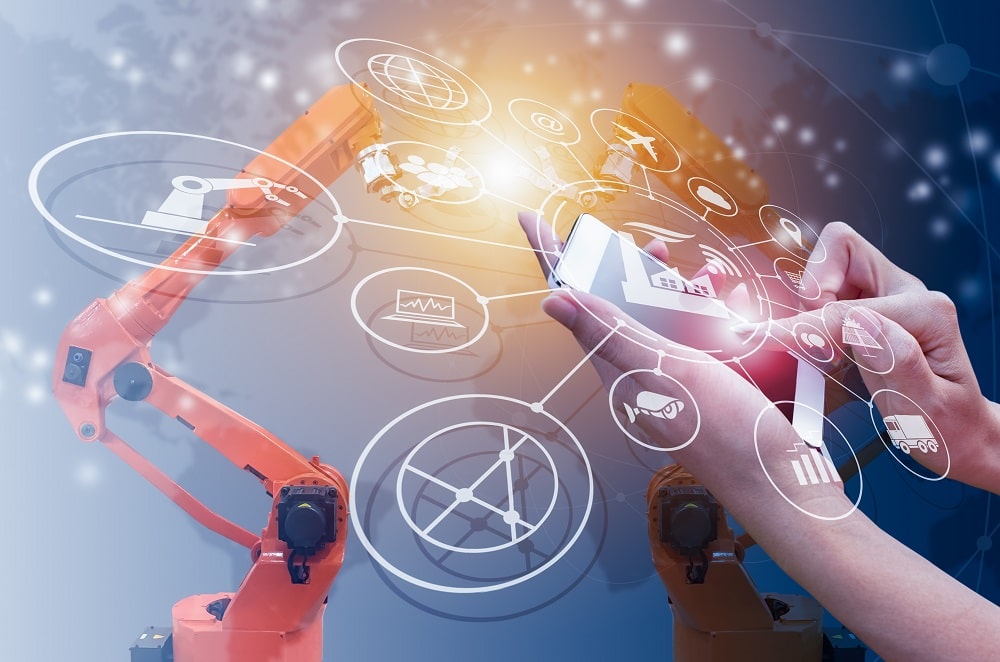



On November 23, 2022, the Report on the Development of Intelligent Manufacturing in China: Standardization (hereinafter referred to as “the Report”) was published by the China Electronics Standardization Institute (CESI) at the main forum of World Intelligent Manufacturing Conference in Nanjing of China. It is an analysis and summary of the achievements that have been made in China’s standardization work on intelligent manufacturing. This article will walk you through the main contents of the Report.

Intelligent manufacturing, also commonly known as smart manufacturing, is the key measure for establishing a modernized industrial system and realizing a new type of industrialization, boosting China’s manufacturing. Standards provide important technical support for intelligent manufacturing development, and play a fundamental and guiding role in reaching consensus, summarizing and learn from achievements based on best practices, promoting technological innovation, and facilitating transformation and upgrading of enterprises.
The Report is composed of four parts, namely foundation, development, practice and expectation. It summarizes the standardization achievements of intelligent manufacturing in China such as the establishment of standardization organizations, standards system planning, standards development and application, as well as international standardization.
Prioritize Standards
In the complex international situation, intelligent manufacturing plays an irreplaceable role in the real economy, ensuring the stable supply of key products and the resilience of industrial chain and supply chain.
In recent years, major economies have paid close attention to intelligent manufacturing. Bing the first to propose the concept of Industry 4.0 in 2011, Germany has prioritized standardization, and published four editions of Standardization Roadmap for Industry 4.0 to guide the standards development and international cooperation in the area.
Other countries and regions such as the US, Russia, Japan and the EU have released their strategic documents for the development of the manufacturing industry, which were designed according to national or regional condition, focusing on the top-level design and building the environment for common development. These documents all emphasized the importance of standardization and the measures for participating in international standardization.
In the international arena, standardization organizations including ISO, IEC, ITU and IEEE have put more efforts to intelligent manufacturing standardization by setting up related committees and facilitating the approval of important standards projects.
In ISO, the Smart Manufacturing Coordination Committee (ISO/SMCC) published a white paper on smart manufacturing in 2021, proposing the roadmap for smart manufacturing. In IEC, IEC/SyC SM was established in 2018 to coordinate the top-level design of smart manufacturing standardization and develop related fundamental standards. Both committees set up a joint working group to work on the related international standards and terminologies. Furthermore, ISO/IEC JWG 21 was set up to create a unified referencing model of smart manufacturing in the world.
By now, the relevant international standards have covered the fundamental and common requirements, smart equipment, smart factory and related technologies, such as IEC TR 63283- 1:2022, Industrial-process measurement, control and automation—Smart manufacturing—Part 1: Terms and definitions, ISO 11593:2022, Robots for industrial environments—Automatic end effector exchange systems—Vocabulary, IEC 62832-1:2020, Industrial-process measurement, control and automation—Digital factory framework—Part 1: General principles, and ISO/IEC 20547-3:2020, Information technology—Big data reference architecture—Part 3: Reference architecture.
Outstanding effects
With the transformation, upgrading and high-quality development of the manufacturing industry, a working mechanism with Chinese characteristics has gradually taken shape in the intelligent manufacturing standardization in China. And the standardization work has gone through exploration and development periods, and is now in the deepening period.
Lead development with standards
The Report summarizes the application of standards in 10 major scenarios based on pilot programs in 2022, which rapidly facilitated production, operation, management and service in manufacturing enterprises by means of standardization, and exerted the role of standards to promote the transformation and upgrading of as well as the innovation in the manufacturing industry.
1) Improving capability by evaluation
National standards such as GB/ T 39116-2020, Maturity model of intelligent manufacturing capability, have basically established the method system for capability evaluation and improvement of intelligent manufacturing. After adopting the standards, an enterprise on mechanical equipment has established an intelligent factory with 15 others under construction, improved its capacity by 25.02 percent, reduced the production cycle by 21.51 percent, and raised the production efficiency by 13.45 percent .
2) Accelerating digital process of factories
Multiple national standards such as GB/ T 40654, Intelligent manufacturing—Virtual factory information model, cover the design, delivery and industrial application of intelligent factories. With these standards, a design project on intelligent factory of new energy battery has effectively facilitated the construction of intelligent factories, and reduced the design period by 30 percent with digital delivery.
3) Extending replication and promotion
A serial of national standards such as GB/ T 37393-2019, Digital factory—General technical requirements, specifies the fundamental requirements and indicator system for digital factory. Guided by these standards, an instrument and apparatus company has greatly improved its production efficiency after the establishment of digital factory, with new sales reaching over 11 billion yuan. By now, these standards have been applied in nearly 100 enterprises in China.
4) Addressing information island
National standards on system integration like GB/T 40647-2021, Intelligent manufacturing—System architecture, serve as guiding documents. Through applying these standards, an automotive electronics enterprise has connected all devices to the Internet and increased the automation rate of production lines to 47 percent, providing reference for building a highly coordinated production system.
5) Increasing industrial data supply via interconnection
National standards such as GB/T 39561.1-2020, Interconnection and interoperation of numerical control equipment—Part 1: General technical requirement, can help to solve problems such as inconsistent communication protocols and information island. For example, a compressor manufacturer has realized the interconnection of CNC equipment to provide agile services for users. It has also achieved the online monitoring and defects diagnosis of more than 4,000 machine sets for users, effectively securing the safety of machines and economic interest of users.
If you need more information or have any question on the topic, please contact: assistant@bestao-consulting.com


